thanks TBRRe posts discussing suicide, don't forget there is a spoiler tool which can be found by clicking the three dots in the middle of the top of the comment box.
It looks like an eye with a strike through it and can be used to apply a trigger warning like so:
What you type then appears here after being clicked on
-
IMPORTANT // Please look after your loved ones, yourself and be kind to others. If you are feeling that the world is too hard to handle there is always help - I implore you not to hesitate in contacting one of these wonderful organisations Lifeline and Beyond Blue ... and I'm sure reaching out to our PRE community we will find a way to help. T.
Talking Politics
- Thread starter Legends of 2017
- Start date
You are using an out of date browser. It may not display this or other websites correctly.
You should upgrade or use an alternative browser.
You should upgrade or use an alternative browser.
Thanks for posting IanG, it hit the nail on the head.Boomer of an article by Richard Flanagan:

Morrison government’s fall marks end of Howard-era ascendancy
Every issue that defined Scott Morrison’s downfall had deep roots in John Howard’s prime ministership.t.co
Thank goodness I left the US before my kids had to do the active shooter training.

 www.smh.com.au
www.smh.com.au
Shooter drills in class and guns in friends’ homes: Why Matilda, 9, doesn’t miss her US school
Just hours before the shooting at a Texas school in which 19 children were killed this week, schoolgirl Matilda McCullough delivered this speech to her Australian classmates about the gun drills regularly held at her US school.
All the talk of a gradual transition away from fossil fuels ignores the bloody great elephant in the room. We could have had a gradual transition away from fossil fuels, we had the chance to do this. There was a reduction in carbon emissions after the carbon price introduced by the Gillard government. Then we voted Abbott in who removed the carbon price.
Now we have to do a quicker transition and it is our own fault for not choosing a more gradual transition when we had the chance.
DS
Now we have to do a quicker transition and it is our own fault for not choosing a more gradual transition when we had the chance.
DS
Just to make the pointYes true.
The Libs will push corruption but Guy has to be careful or the lobster cave dinner may resurface !!
There is no doubt imo the ALP has got off fairly easily so far given what has been discovered at IBAC but unfortunately for the Victoria Liberal party there are some skeletons in their closet as well.
The Onion's front page was equally confronting


 www.theonion.com
www.theonion.com


The Onion | America's Finest News Source.
The Onion brings you all of the latest news, stories, photos, videos and more from America's finest news source.
 www.theonion.com
www.theonion.com
Great analysis on what has happened to the Liberal party
https://www.smh.com.au/national/mor...of-howard-era-ascendancy-20220525-p5aod6.html
https://www.smh.com.au/national/mor...of-howard-era-ascendancy-20220525-p5aod6.html
The coal industry employs 40k,and they are expecting that to increase by 5percent per year until 2025.Mate you don't know much about modern coal mines.
A very large proportion of new coal mines opening, are operated with heavy amounts of automation. The coal industry maximise profits by doing so of course, and minimise workplace injuries etc in the process.
The are other countries in the world who have closed coal mines. There's a town in Spain for example, that used to live by coal. The government there closed all but 1 coal furnace, and built a solar manufacturing company. They moved the coal miners into solar employees.
They may have shut the last coal furnace by now (I was there in 2013), as it was there intent to move to renewable power. The produced enough electricity to power some very large, densely populated cities. We can do better than coal, think about it.
Ok after doing some research ,Australia does not manufacture solar panels in fact there is only 1 that does,but all it's components are made overseas ,and assembled here.
The profit margin of manufacturing solar panels here is very small ,and the better profit margin made is by installing them ,which you have to be a trades person .
Solar panels have warranties of 20/25 years,inverters 10 years ,so once installed they need little to no maintenance.
So to manufacture them here would cost more for a short term gain ,we can't compete with overseas slave workers .
Here is a story about the rise and fall of solar panels manufacturing in Australia.
Australia's solar bust: How it all went so horribly wrong
Twenty years ago, Australia appeared set to be a global player in the solar panel manufacturing industry. Today, with panels in high demand, we hardly make any of them. Here's how we lost our head start.
Ok you used Spain as a example ,but they still have systems for constant power Nuclear/combined cycle /Hydro//Coal/ so they have over 50 percent of there general power being from a constant power source.
Also you have to take into account that Spain is 15 times smaller than Australia.
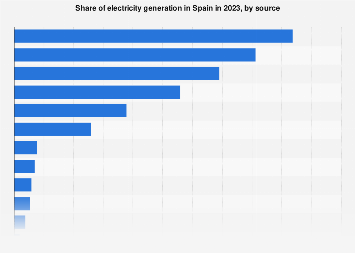
Electricity generation by source Spain 2023 | Statista
The Spanish grid was mainly powered by wind and nuclear power plants in 2023.
I have heard people mentioning battery storage,the one built in Victoria ,has the capacity to power 1.5 million homes for 30 minutes ,Melbourne has about 3-4 million people,Victoria has roughly about 6.5 million people ,so you would need to build quite a lot of battery storage facilities to provide constant power .
Batteries are good for short term power/long term no.
Ok here's a couple of sites of the positive and negative of solar panels .
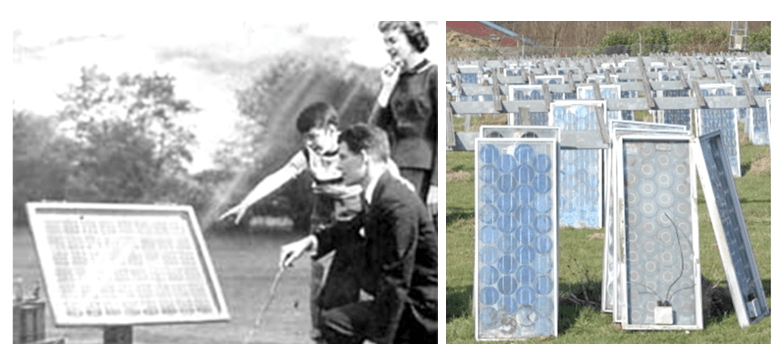
If Solar Panels Are So Clean, Why Do They Produce So Much Toxic Waste?
Environmental scientists and solar industry leaders are raising the red flag about used solar panels, which contain toxic heavy metals and are considered hazardous waste. With recycling expensive, most solar panels end up in landfills. Will they be exported to poor nations?
 www.forbes.com
www.forbes.com

The Positive and Negative Environmental Impacts of Solar Panels
An in-depth look at the environmental upsides and downsides of solar panels, including environmental impacts during the manufacturing and lifetime of the system
 kubyenergy.ca
kubyenergy.ca
Like l have said to do it properly it has to be gradual ,lm not against renewables ,but to have it done in a time frame some are suggesting is ridiculous .
I could add so much more ,but it has already become too long winded.
Go the Tiges.
The coal industry employs 40k,and they are expecting that to increase by 5percent per year until 2025.
Ok after doing some research ,Australia does not manufacture solar panels in fact there is only 1 that does,but all it's components are made overseas ,and assembled here.
The profit margin of manufacturing solar panels here is very small ,and the better profit margin made is by installing them ,which you have to be a trades person .
Solar panels have warranties of 20/25 years,inverters 10 years ,so once installed they need little to no maintenance.
So to manufacture them here would cost more for a short term gain ,we can't compete with overseas slave workers .
Here is a story about the rise and fall of solar panels manufacturing in Australia.
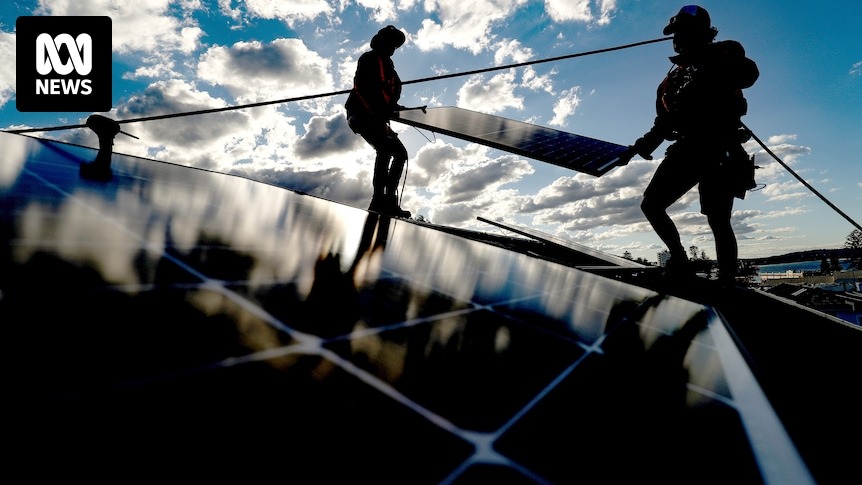
Australia's solar bust: How it all went so horribly wrong
Twenty years ago, Australia appeared set to be a global player in the solar panel manufacturing industry. Today, with panels in high demand, we hardly make any of them. Here's how we lost our head start.www.abc.net.au
Ok you used Spain as a example ,but they still have systems for constant power Nuclear/combined cycle /Hydro//Coal/ so they have over 50 percent of there general power being from a constant power source.
Also you have to take into account that Spain is 15 times smaller than Australia.

Electricity generation by source Spain 2023 | Statista
The Spanish grid was mainly powered by wind and nuclear power plants in 2023.www.statista.com
I have heard people mentioning battery storage,the one built in Victoria ,has the capacity to power 1.5 million homes for 30 minutes ,Melbourne has about 3-4 million people,Victoria has roughly about 6.5 million people ,so you would need to build quite a lot of battery storage facilities to provide constant power .
Batteries are good for short term power/long term no.
Ok here's a couple of sites of the positive and negative of solar panels .

If Solar Panels Are So Clean, Why Do They Produce So Much Toxic Waste?
Environmental scientists and solar industry leaders are raising the red flag about used solar panels, which contain toxic heavy metals and are considered hazardous waste. With recycling expensive, most solar panels end up in landfills. Will they be exported to poor nations?www.forbes.com

The Positive and Negative Environmental Impacts of Solar Panels
An in-depth look at the environmental upsides and downsides of solar panels, including environmental impacts during the manufacturing and lifetime of the systemkubyenergy.ca
Like l have said to do it properly it has to be gradual ,lm not against renewables ,but to have it done in a time frame some are suggesting is ridiculous .
I could add so much more ,but it has already become too long winded.
Go the Tiges.
We need to accept that some of what we need to build our future power grid has to be based on technology that doesn't exist at the level we need right now, but we need a pathway to move our power supplies from what we have right now, to what we want in the future.
There are some great examples of this on smaller scales. Look at the attached article which is about a microgrid for the Broken Hill area. For a country our size, if we don't move more towards rural areas being powered via Microgrids, then the increase in transmission costs will be massive. There is already an expected $40bn that will be spent on upgrading our power grid that has to happen now, but with focuses around Microgrids, maybe we can minimise some of this.
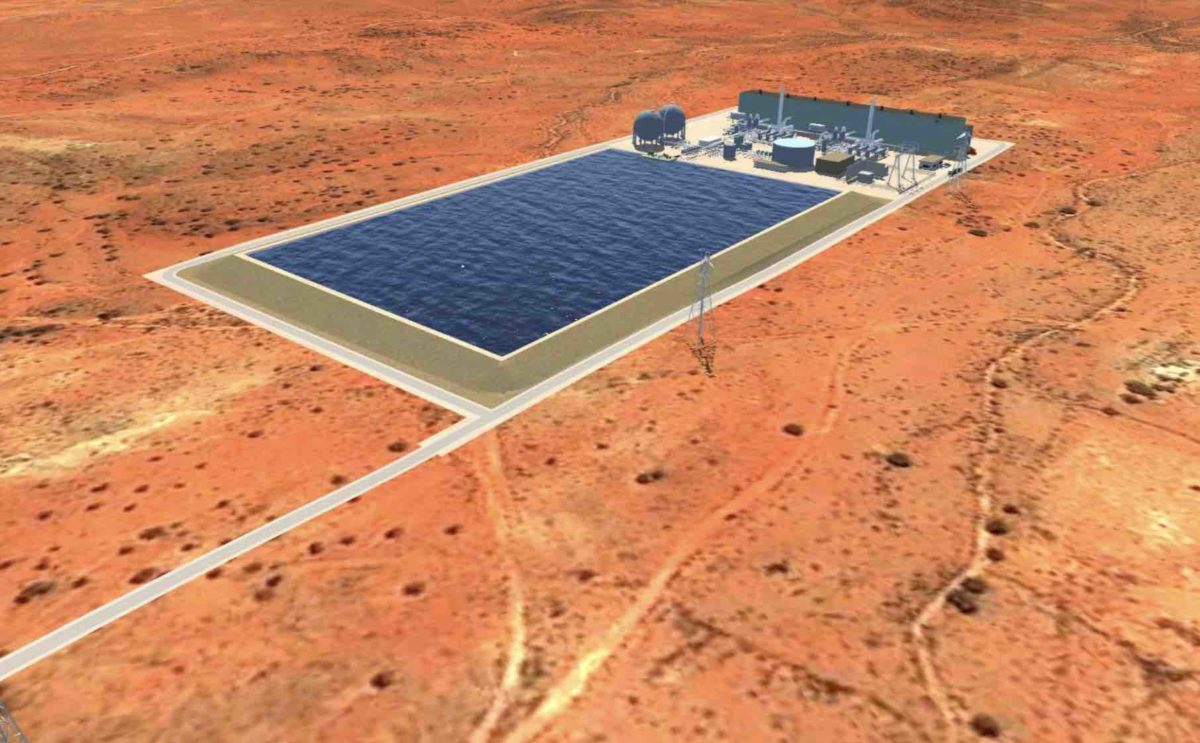
Broken Hill renewable microgrid revived after Transgrid finds a way to dump diesel
Transgrid revives renewable micro-grid proposal for Broken Hill, dumping diesel option in favour of compressed air storage. But it will depend on a grant.
Batteries are certainly an issue in terms of capacity, but IMO the ideal scenario that we have, is that rooftop solar becomes the greatest power generator for our daytime power requirements (hence decreasing the demand on the network, which is forecast to double in capacity by 2050 - that has to be managed through reduction in demand due to rooftop solar) and then centralised power capacity (on smaller than national networks, whether that is city based with microgrids, I'm not sure) that generates power through daylight hours and stored in batteries (solar) all year but intermittent (wind), all through the day (hydro) that the grid can then transmit through non daylight hours. Hydrogen is potentially one of these sources too, as hydrogen fuel celled batteries can hold far in excess of our current lithium batteries. The move towards hydrogen has started and should be included in the roadmap.
The focus right now from the government has to be on how we transition to a new system. That is through decreasing demand from the NEM on the East Coast, and then how to replace the dirtiest production methods, which has to start with coal. IMO, the best way to deal with coal is to increase the cost, so IMO, the best way to do that is to drive the price up via royalty. The below table are the current royalty rates in QLD. I'm ok with where they are right now, but to put pressure on coal power companies, if you drive the cost up, this will reduce demand as power companies will be forced to seek out cheaper forms of power. Either legislate through the regions or, legislate with a new federal royalty which is charged on top of state royalties. So looking at the below, with current thermal prices sitting at elevated levels, QLD may be getting somewhere around $40-$45 royalty per tonne right now. I'd like to see a new federal royalty announced very soon, with the implementation date in the future, lets say 2025 with an increase annually. Lets say they match the QLD rates initially, if coal prices decline, then is 14% of the price, rising to 25%. Increase both rates annually would make sense. Most likely scenario is it it will result in Wholesale prices increasing and will push power generating companies to seek out new sources of power. This will in time push the price of coal down, but with royalties so high, it will deter additional investment in coal mining, which will reduce supply and therefore rebalance that price at elevated levels, but with constant decreasing demand. It needs to be phased in order to allow for transitional power arrangements but as we know from whats going on with AGL, we simply have to ensure that coal power plants are shut down well before 2045.

The other thing that the new government could and should consider IMO, is rooftop solar for larger businesses. The vast majority of rooftop solar subsidies are focused on households and small business (which is fine) but the problem this creates, is larger businesses have large premises that are not being used to their potential for rooftop solar.
In most cases the payback period of solar, which is essentially non operational capex, and therefore when you have competing capex projects, most companies will opt with those which are operational within their business rather than something that adds little value (other than financial) to their operation. In this way, the best thing we could do, is to set up an annual fund that provides short term (5 year) loans to larger scale businesses (current subsidies are not available if you have more than 50 employees) with relatively low interest rates (below bank rates).
Each kw of solar generally costs around $1,150 so a 100kw system (which would generate about 400 kwh / day) would cost a business $115k. If we had say an annual pool of $250m (at say 3% interest rates), then there is a small cost recovery against national borrowing costs, but this could create capacity of about 866 kwh / day or about 316mw per year. That would equate to around about 1% of NEM (East Coast) demand. 5% impact on only this 1 strategy, where we will see rooftop solar for households continue to grow and I like the option of
If they were to set this up for 5 years, with repayments, the max investment would be about $500m, with interest received over the 9 years of about $75m. If it works, they could always scale it up also.
I work in the type of job where I can influence this in my business. To get $115k of capex, I don't think I'd get it through, to be able to get it as a lease product (finance lease) then I reckon I could easily get this through, especially if the lease remains with the property in the event that the tenant were to leave and move to another property. This is one of the biggest concerns around payback in industry, if the payback is say 5 years, will we receive any of the benefit??
In most cases the payback period of solar, which is essentially non operational capex, and therefore when you have competing capex projects, most companies will opt with those which are operational within their business rather than something that adds little value (other than financial) to their operation. In this way, the best thing we could do, is to set up an annual fund that provides short term (5 year) loans to larger scale businesses (current subsidies are not available if you have more than 50 employees) with relatively low interest rates (below bank rates).
Each kw of solar generally costs around $1,150 so a 100kw system (which would generate about 400 kwh / day) would cost a business $115k. If we had say an annual pool of $250m (at say 3% interest rates), then there is a small cost recovery against national borrowing costs, but this could create capacity of about 866 kwh / day or about 316mw per year. That would equate to around about 1% of NEM (East Coast) demand. 5% impact on only this 1 strategy, where we will see rooftop solar for households continue to grow and I like the option of
If they were to set this up for 5 years, with repayments, the max investment would be about $500m, with interest received over the 9 years of about $75m. If it works, they could always scale it up also.
I work in the type of job where I can influence this in my business. To get $115k of capex, I don't think I'd get it through, to be able to get it as a lease product (finance lease) then I reckon I could easily get this through, especially if the lease remains with the property in the event that the tenant were to leave and move to another property. This is one of the biggest concerns around payback in industry, if the payback is say 5 years, will we receive any of the benefit??
Coal is on the way out in Australia ,and l agree with you about micro grids ,and hydrogen .We need to accept that some of what we need to build our future power grid has to be based on technology that doesn't exist at the level we need right now, but we need a pathway to move our power supplies from what we have right now, to what we want in the future.
There are some great examples of this on smaller scales. Look at the attached article which is about a microgrid for the Broken Hill area. For a country our size, if we don't move more towards rural areas being powered via Microgrids, then the increase in transmission costs will be massive. There is already an expected $40bn that will be spent on upgrading our power grid that has to happen now, but with focuses around Microgrids, maybe we can minimise some of this.

Broken Hill renewable microgrid revived after Transgrid finds a way to dump diesel
Transgrid revives renewable micro-grid proposal for Broken Hill, dumping diesel option in favour of compressed air storage. But it will depend on a grant.reneweconomy.com.au
Batteries are certainly an issue in terms of capacity, but IMO the ideal scenario that we have, is that rooftop solar becomes the greatest power generator for our daytime power requirements (hence decreasing the demand on the network, which is forecast to double in capacity by 2050 - that has to be managed through reduction in demand due to rooftop solar) and then centralised power capacity (on smaller than national networks, whether that is city based with microgrids, I'm not sure) that generates power through daylight hours and stored in batteries (solar) all year but intermittent (wind), all through the day (hydro) that the grid can then transmit through non daylight hours. Hydrogen is potentially one of these sources too, as hydrogen fuel celled batteries can hold far in excess of our current lithium batteries. The move towards hydrogen has started and should be included in the roadmap.
The focus right now from the government has to be on how we transition to a new system. That is through decreasing demand from the NEM on the East Coast, and then how to replace the dirtiest production methods, which has to start with coal. IMO, the best way to deal with coal is to increase the cost, so IMO, the best way to do that is to drive the price up via royalty. The below table are the current royalty rates in QLD. I'm ok with where they are right now, but to put pressure on coal power companies, if you drive the cost up, this will reduce demand as power companies will be forced to seek out cheaper forms of power. Either legislate through the regions or, legislate with a new federal royalty which is charged on top of state royalties. So looking at the below, with current thermal prices sitting at elevated levels, QLD may be getting somewhere around $40-$45 royalty per tonne right now. I'd like to see a new federal royalty announced very soon, with the implementation date in the future, lets say 2025 with an increase annually. Lets say they match the QLD rates initially, if coal prices decline, then is 14% of the price, rising to 25%. Increase both rates annually would make sense. Most likely scenario is it it will result in Wholesale prices increasing and will push power generating companies to seek out new sources of power. This will in time push the price of coal down, but with royalties so high, it will deter additional investment in coal mining, which will reduce supply and therefore rebalance that price at elevated levels, but with constant decreasing demand. It needs to be phased in order to allow for transitional power arrangements but as we know from whats going on with AGL, we simply have to ensure that coal power plants are shut down well before 2045.
View attachment 15534
I really do think though, a Nuclear power plant is something Australia should look at as well,it has high initial costing ,but low running costs ,and some of these plants last 60 year's .
It won't happen while the greens hold the balance in the senate .
I am quite sure it will be something the coalition will push at the next election .
Last edited:
Some large businesses in Ballarat already have large amounts of solar panels ,but ballarat on average doesn't get large amount of sunlight .The other thing that the new government could and should consider IMO, is rooftop solar for larger businesses. The vast majority of rooftop solar subsidies are focused on households and small business (which is fine) but the problem this creates, is larger businesses have large premises that are not being used to their potential for rooftop solar.
In most cases the payback period of solar, which is essentially non operational capex, and therefore when you have competing capex projects, most companies will opt with those which are operational within their business rather than something that adds little value (other than financial) to their operation. In this way, the best thing we could do, is to set up an annual fund that provides short term (5 year) loans to larger scale businesses (current subsidies are not available if you have more than 50 employees) with relatively low interest rates (below bank rates).
Each kw of solar generally costs around $1,150 so a 100kw system (which would generate about 400 kwh / day) would cost a business $115k. If we had say an annual pool of $250m (at say 3% interest rates), then there is a small cost recovery against national borrowing costs, but this could create capacity of about 866 kwh / day or about 316mw per year. That would equate to around about 1% of NEM (East Coast) demand. 5% impact on only this 1 strategy, where we will see rooftop solar for households continue to grow and I like the option of
If they were to set this up for 5 years, with repayments, the max investment would be about $500m, with interest received over the 9 years of about $75m. If it works, they could always scale it up also.
I work in the type of job where I can influence this in my business. To get $115k of capex, I don't think I'd get it through, to be able to get it as a lease product (finance lease) then I reckon I could easily get this through, especially if the lease remains with the property in the event that the tenant were to leave and move to another property. This is one of the biggest concerns around payback in industry, if the payback is say 5 years, will we receive any of the benefit??
Nuclear is simply not a carbon neutral energy source.
It is also not viable.
Nuclear is very expensive, it is very slow to ramp up, and the uranium ore which is available is reducing in quality such that more and more would need to be enriched to run a nuclear power station. Uranium is simply not a renewable resource, it will run out, why base a long term solution on a resource that will run out?
Then, you have the 250,000 years of toxic deadly waste for which there is no known method of disposal to deal with.
So, short term, albeit quite slow, maybe partial solution to greenhouse gasses, combined with an insoluble waste problem that lasts for longer than human civilisation has existed for.
There are very good reasons why nuclear power is not an option.
What I want to see more work done on is solar collecting power stations (they work overnight in the right location) and things like tidal power. These are the options for reliable baseload power along with hydro and some batteries. We also need to demand manage so that we run power hungry facilities when the power is available.
DS
It is also not viable.
Nuclear is very expensive, it is very slow to ramp up, and the uranium ore which is available is reducing in quality such that more and more would need to be enriched to run a nuclear power station. Uranium is simply not a renewable resource, it will run out, why base a long term solution on a resource that will run out?
Then, you have the 250,000 years of toxic deadly waste for which there is no known method of disposal to deal with.
So, short term, albeit quite slow, maybe partial solution to greenhouse gasses, combined with an insoluble waste problem that lasts for longer than human civilisation has existed for.
There are very good reasons why nuclear power is not an option.
What I want to see more work done on is solar collecting power stations (they work overnight in the right location) and things like tidal power. These are the options for reliable baseload power along with hydro and some batteries. We also need to demand manage so that we run power hungry facilities when the power is available.
DS
Last edited:

Address the mess Albo - fossil super profits and soaring energy bills - now may be your only time - Michael West
The new Labor government of Anthony Albanese has a unique opportunity to address mining super profits and soaring energy bills. Now is the time
Linda burney is going to be the first decent indigenous affairs minister, ever.
Ditching the cashless racist card,
And paying CDP (black) workers award wages and super
(Der)
In week 1.
Gee, who would have thunk a black labor woman
Would make a good indigenous affairs minister?
Ditching the cashless racist card,
And paying CDP (black) workers award wages and super
(Der)
In week 1.
Gee, who would have thunk a black labor woman
Would make a good indigenous affairs minister?
Just brutal.
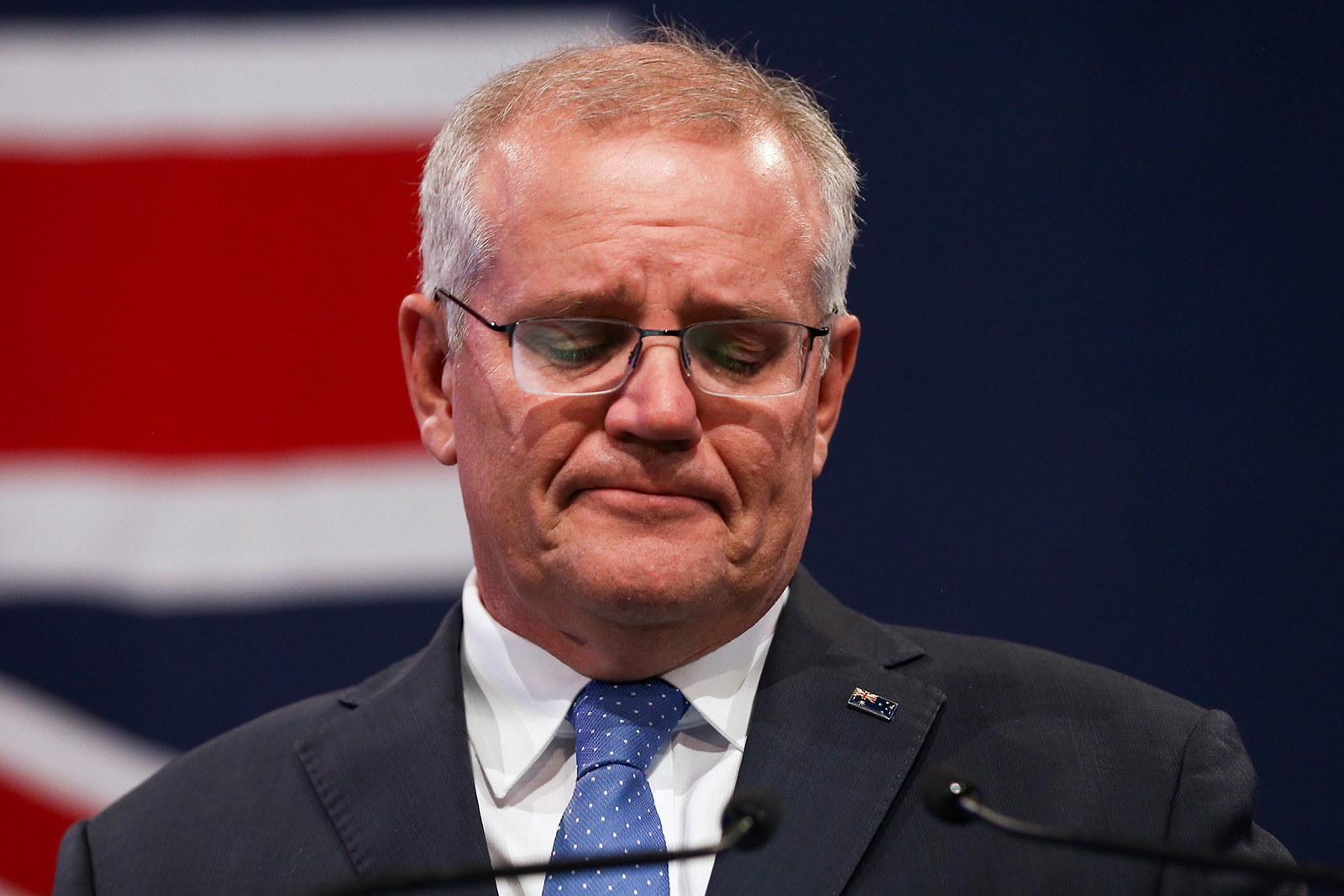
 theshot.net.au
theshot.net.au

Requiem for a lost country - The Shot
Scott Morrison is gone. Although he isn’t dead, something is gone all the same
Came to post that, Baloo. Sums it up. Ronni Salt is a gun.
Please let Morrison be the cruelest, the most gutless, the most fraudulent, the most awful, the biggest grifter, ever to disgrace the Lodge. Never again. Mo matter how hard these pathetic 'journos' try to ram new, soft, cuddly Voldemort down our throats.
Albo should break up NewsCorp and raise Channel 9's license fee from whatever it is to $20 billion. Per year.
Please let Morrison be the cruelest, the most gutless, the most fraudulent, the most awful, the biggest grifter, ever to disgrace the Lodge. Never again. Mo matter how hard these pathetic 'journos' try to ram new, soft, cuddly Voldemort down our throats.
Albo should break up NewsCorp and raise Channel 9's license fee from whatever it is to $20 billion. Per year.


